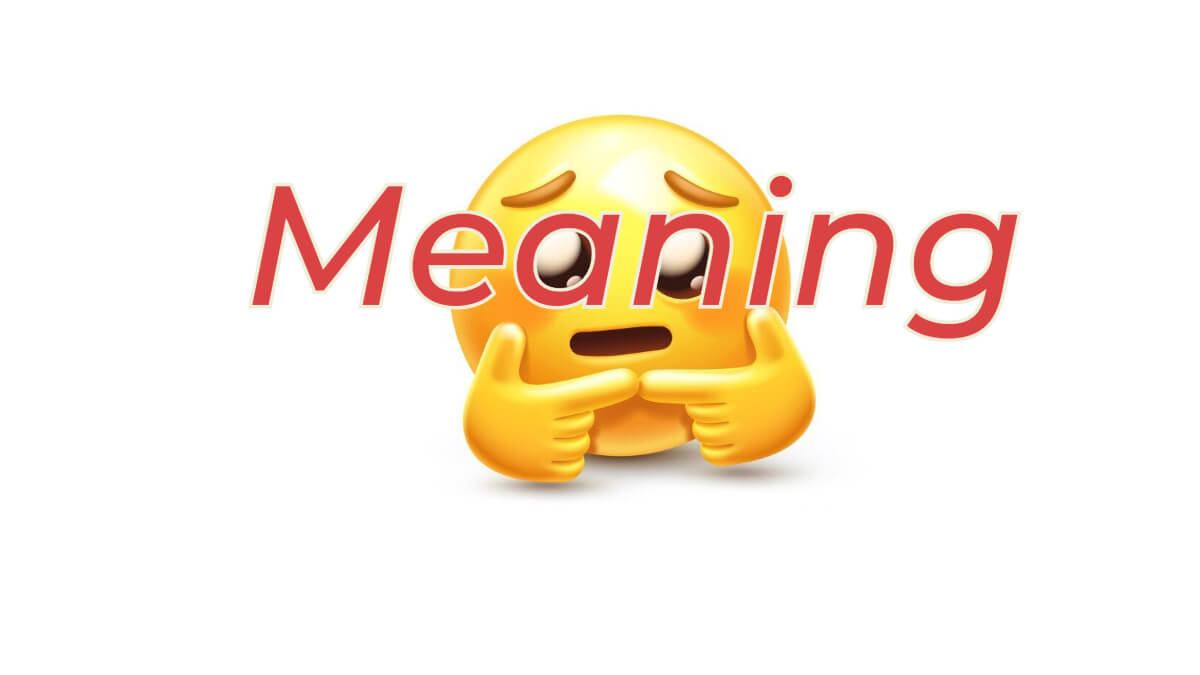What Does 👉👈 Mean In Texting – Interpretation, Use & Examples
We live in a world where emojis have become a big part of how we talk to each other online. They pop up everywhere, from social media to text messages. One emoji that has caught a lot of attention is 👉👈. But what does it mean? The answer isn’t simple. This article will dig into the meaning of 👉👈, how it’s used, and why context matters when interpreting it.
What Does 👉👈 Mean in Texting
The emoji 👉👈 shows two hands pointing at each other. You might think it’s straightforward, but it’s not. This emoji can mean a lot of different things. It’s often used to show shyness or awkwardness. Sometimes, people use it to ask for something in a shy way.
When Do People Use 👉👈?
You’ll see 👉👈 in lots of places. It shows up in casual text messages between friends. It also appears on social media posts and comments. People use it when they share memes. It’s not uncommon to find this emoji in places like Twitter, Instagram, or even in a WhatsApp chat.
Context Is King
Remember, context is crucial for any emoji, and 👉👈 is no different. The meaning can change depending on what you’re talking about. If someone says, “Can you lend me some money 👉👈?”, they are probably asking shyly or awkwardly. But if it’s used after a compliment like, “You look great today 👉👈,” it could mean the person is shyly accepting the praise.
How to Interpret 👉👈
Interpreting emojis like 👉👈 can be tricky. Here’s a simple guide to help you:
- Look at the Whole Message: Don’t just focus on the emoji. Read the entire text to get the full idea.
- Think About Who Sent It: If a close friend used it, the meaning might be different than if a stranger did.
- Consider the Platform: Emojis can mean different things on different social media platforms.
- Ask If Unsure: When in doubt, it’s okay to ask the person what they meant.
Mistakes to Avoid and Tips to Use 👉👈 Wisely
Common Mistakes
People often use 👉👈 without knowing what it means. That can lead to misunderstandings. For example, using it in a formal email would not be appropriate. Also, overusing this emoji can make your messages confusing.
Tips for Smart Use
- Know Your Audience: Don’t use it in formal settings.
- Use Sparingly: This emoji has a strong meaning. Using it too much can dilute its impact.
- Pair with Text: Make your intention clear by using text alongside the emoji.
Real-World Examples of 👉👈 in Texts
What Does 👉👈 Look Like in Social Settings?
In a casual text between friends, you might see a message like: “Hey, can you pick me up from the airport tomorrow 👉👈?” The emoji here adds a layer of hesitance or shyness to the request. It’s a way of saying, “If it’s not too much trouble…”
When 👉👈 Appears in Formal Texts
You’re less likely to find 👉👈 in formal emails or messages. However, if you do come across it, it’s probably not the best practice. Imagine receiving a business email that ends with, “Looking forward to your reply 👉👈.” It would likely seem unprofessional.
How Does 👉👈 Affect the Tone of a Conversation?
This little emoji can change the tone of your conversation in a big way. For example, saying “I love you” and “I love you 👉👈” carry slightly different weights. The latter adds a dose of vulnerability or hesitance.
The Role of Accompanying Text
The accompanying text is crucial. For example, “You’re awesome 👉👈” versus “Are you sure about this 👉👈” make the emoji serve very different purposes. One is a shy compliment, and the other is a hesitant query.
The Dos and Don’ts of Using 👉👈
Best Practices for Using 👉👈
Here are some best practices for using this emoji:
- Keep It Casual: Stick to using it in casual, informal conversations.
- Less Is More: Overusing this emoji can confuse the receiver. Use it sparingly.
- Pair with Appropriate Text: Make sure the accompanying text matches the intent of the emoji.
Common Pitfalls and Mistakes to Avoid
Let’s talk about some mistakes to avoid:
- Using in Formal Settings: 👉👈 isn’t suitable for formal emails or professional conversations.
- Assuming Universal Understanding: Not everyone interprets emojis the same way.
- Leaving It Open to Interpretation: Without clear accompanying text, the meaning can get lost.
Advice for Effective Communication Using 👉👈
If you’re going to use 👉👈, do it right. Here’s how:
- Know Your Audience: If the other person isn’t emoji-savvy, maybe skip it.
- Be Clear: Make sure the rest of your message clears up any ambiguity the emoji might add.
- When In Doubt, Spell It Out: If you’re not sure whether your message is clear, add a sentence to explain.
Similar Emojis and How They Differ
Emojis are more than just cute symbols. They can say a lot in just one small image. But some emojis look like 👉👈 and can be confusing. For example, the “Shy Cat” 😳 emoji or the “Finger Snap” 👌 emoji.
Meaning Variance: Why It’s Important
The meaning of each emoji can change depending on how you use it. For instance, 😳 usually shows embarrassment, while 👌 means “okay” or “perfect.” If you swap these for 👉👈, the meaning of your text could change completely.
Why Choosing the Right Emoji Matters
You want to send the right message, right? Picking the right emoji helps you do that. Using the wrong one can make things awkward or confusing. So, understanding the nuanced differences is key to making the right choice.
Conclusion
The emoji 👉👈 is more than just two fingers pointing at each other. It’s a symbol that carries a lot of weight. It can show hesitance, shyness, or even vulnerability.
Key Takeaways for Texting
Here’s what you need to remember:
- Keep it Casual: This emoji works best in informal conversations.
- Context Matters: The words you use with 👉👈 should match its meaning.
- Less Is More: Using it too much can lose its impact.
Frequently Asked Questions About 👉👈
What does the 👉👈 emoji mean?
The 👉👈 emoji often signifies shyness, hesitance, or vulnerability in a conversation.
Is the 👉👈 emoji suitable for formal texts?
No, it’s generally best used in casual, informal settings.
Can the meaning of 👉👈 change based on context?
Yes, the meaning can vary depending on the accompanying text and overall tone of the conversation.
What are some emojis similar to 👉👈?
Some similar emojis include the “Shy Cat” 😳 and the “Finger Snap” 👌.
What’s the main difference between 👉👈 and similar emojis like 😳?
While both can denote shyness or awkwardness, 😳 usually indicates embarrassment and 👌 means “okay” or “perfect.”
Are there any common mistakes to avoid when using 👉👈?
Overusing it or using it in a mismatched context are common pitfalls.
What are the best practices for using 👉👈?
Keep it casual, ensure that the context matches, and don’t overuse it.
Should I use 👉👈 only with people I am close to?
It’s generally safe to use with friends or in settings where casual language is acceptable.
How has the use of 👉👈 evolved?
The emoji has gained popularity as a way to denote awkwardness or hesitance, especially in online or text conversations.
What are the final tips for using 👉👈 effectively?
Keep it casual, make sure it fits the context, and don’t overuse it. Keep practicing to get the hang of it.
Can emojis like 👉👈 affect the tone of a text?
Yes, emojis can add emotional nuance to a text, making it feel more personal and expressive.

